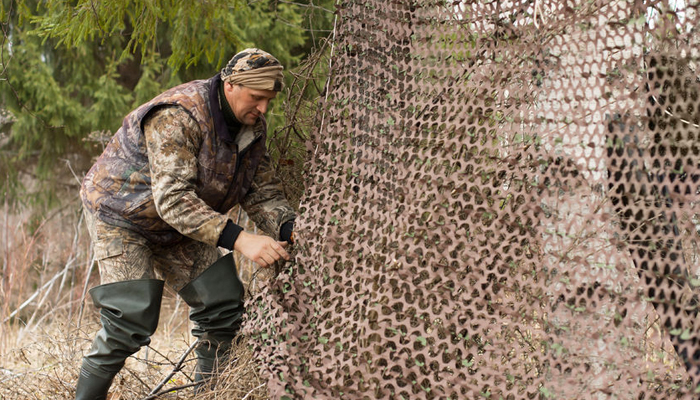
There are two schools of thought when it comes to camouflage. In one camp, you have those that believe that camouflage netting is a red flag, you are hiding something obviously, so further investigation is warranted, which no one wants. No netting means that no one is the wiser, nothing to see here, so move along is the thinking of some.
The second camp scratches their head, however, at this statement, because, you do have something to hide, and the whole concept of netting is to make things appear as if nothing is there.
Are you confused yet? Let’s talk about what Camo netting is, what it really is supposed to do, how to use it effectively, and then you can decide.
1.) Camouflage netting if used correctly will create patterned shadows, which break up the characteristic outlines of a target. A target can be a person, equipment, supplies, and structures, entrances to underground bunkers or anything else that you want to remain hidden.
2.) Camo netting will scatter radar returns if you have the right netting, so keep this in mind, because there is radar transparent netting that will not confuse radar equipment.
3.) Netting will to some extent, absorb heat from vehicles, human bodies, and structures and then disperse that heat in such a way that a signature cannot be established using thermal equipment. Thermal cameras, for example, will, however, show a heat source, but the signature is scattered and an analyst may very well assume the heat is from rodents or other small mammals.
4.) Remember camouflage netting or any Camouflage for that matter must reflect the colors of a particular area for it to be effective, so the netting should simulate colors and shadow patterns commonly found in a particular region.
Obviously, if a person walks into your camp and sees netting strung all over the place, they will become curious, but using the same logic if a person walks into your camp and sees your bug-out-vehicle, power generators and then ricks of firewood stacked about they would possibly be more than curious.
Netting is used to restrict the view in many cases, and not necessarily hide the fact there is something there, it keeps people, keeps the enemy from figuring out what is there. The role that netting plays is often times misconstrued.
Camo netting is designed to prevent detection from aircraft and drones, and in some cases, from watercraft and to prevent detection from trackers that are using binoculars and certain imaging devices for scanning large areas.
How to Use Netting Effectively
If you drape netting over a square box, it will simply look like a square box covered with netting. Keep the netting roughly two feet away from what you are concealing, because first, you don’t want the netting to take on the shape of whatever is underneath, and secondly, you want heat disbursement, to confuse thermal imaging equipment.
If hiding a vehicle, for example, you will need supplemental camouflage such as tarps to put on the windshield and you can use mud, or local vegetation to cover mirrors, headlights and other reflective surfaces.
You also need to ensure any shadows that may be cast by the object under the netting are concealed, and this will require observation at various times throughout the day as the sun moves.
Netting is by no means foolproof, but you want to conceal your activities from casual and even intense scrutiny, from planes and drones flying overhead and from those scanning from ground level at some distance. You want to avoid further scrutiny by using netting in the right way.